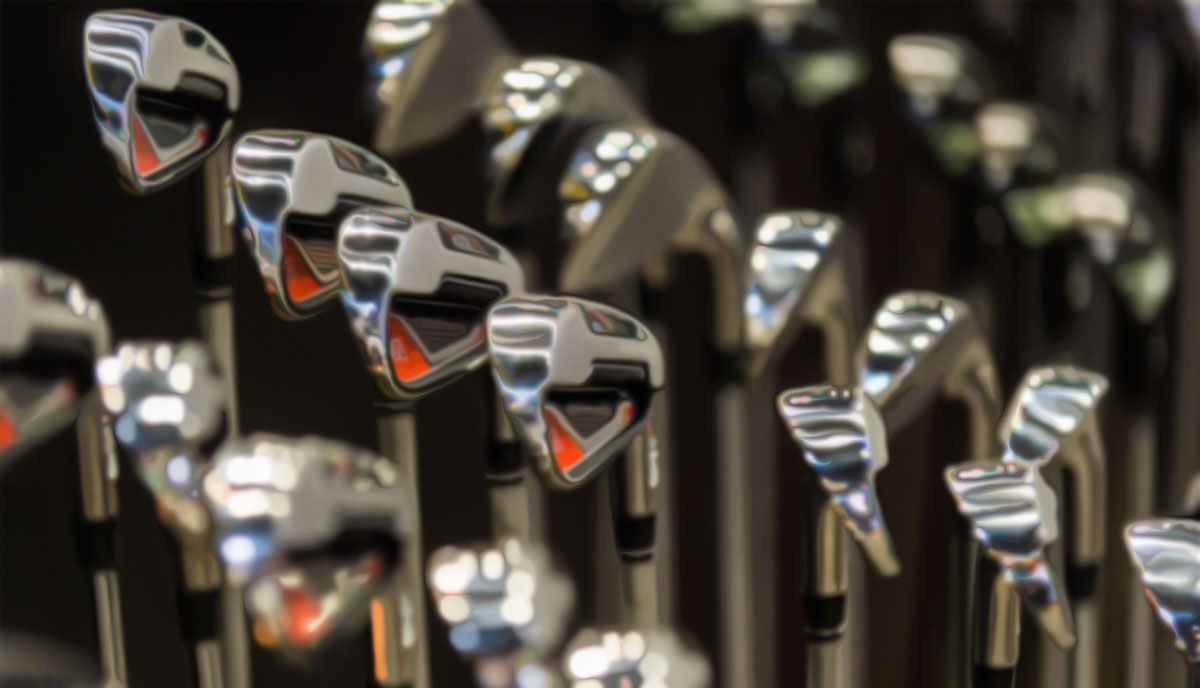
My interest in club building began the year that I began my career in the golf business. Of course, I didn’t know that this would be my life’s journey, but I jumped in so fast it made my head spin.
The year was 1979, in the summer I began a job at Exmoor Country Club in Highland Park Illinois. As far as I knew, it was just a job.
But it was in a sport that I had fallen in love with, but I was not able to afford to play as often as I liked. At 17 years-old, finding a job in the golf industry and play for free really, REALLY interested me.
At Exmoor, I was what we called a Range Rat. I took care of everything at the range from moving the tee markers, picking up broken tees, filling an endless number of divots and yes, I was the guy that all of you tried to hit in the little cart as I drove around picking up balls and washing them.
Lather, rinse and repeat for 10 hours per day just so I could hit a few balls during lag times and on my days off. It was sure better than being a caddy, which I also did at a couple other courses.
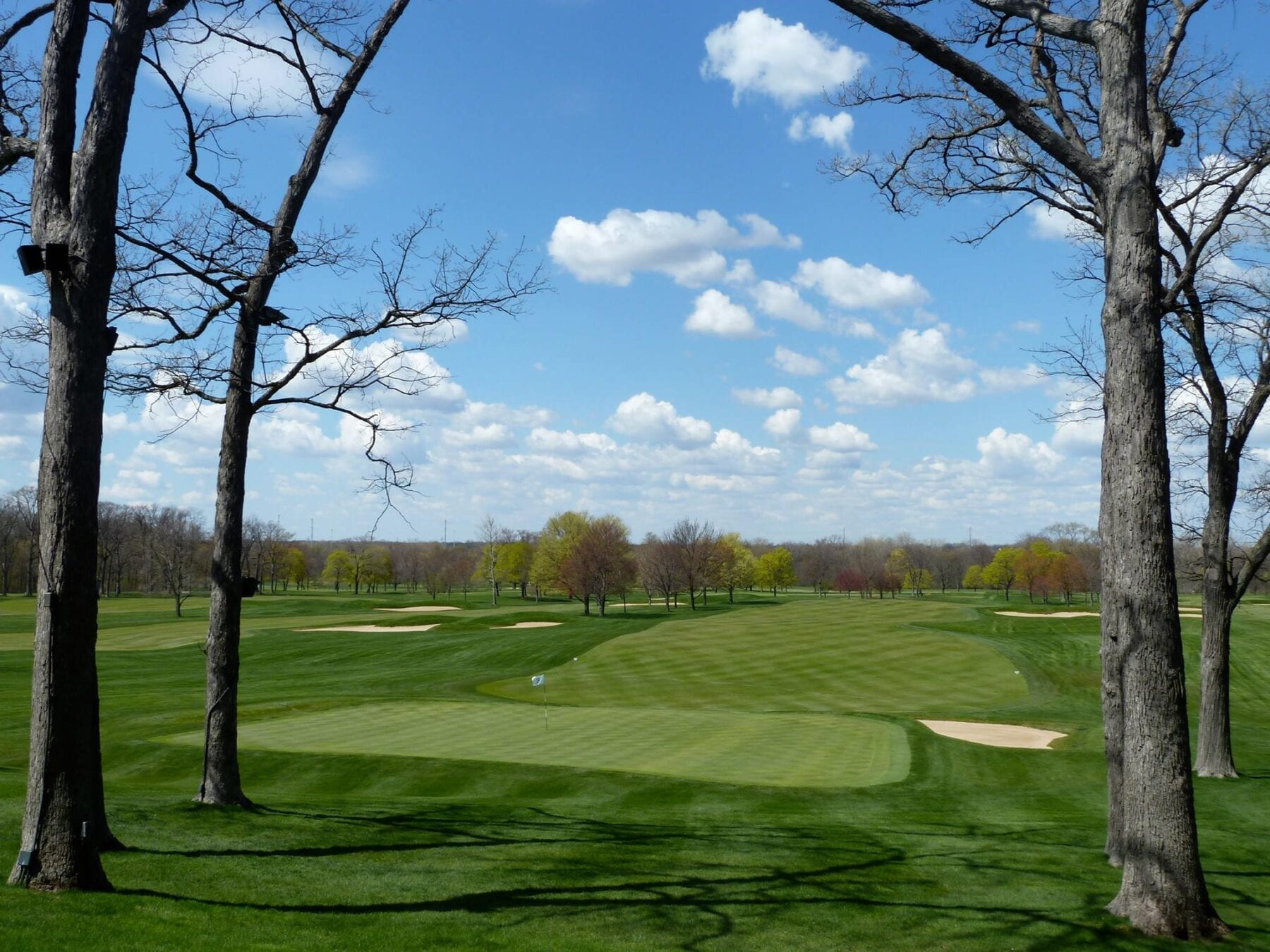
Exmoor Country Club
Founded in 1896, Exmoor Country Club is an historic private country club on Chicago’s North Shore. I was thrilled to have a job at this beautiful course with all the perks one could ask for: free food, free golf clothes, free golf clubs, some of them custom built to my specifications like Wilson Golf in River Grove, more on this later.
Most importantly, as those in the golf industry can attest to, I worked in a golf shop that was a stand-alone building from the Country Club itself. It was prestige, privilege, and education all in one quiet tree-covered building 100 yards from the main clubhouse.
One day I was working in the bag room cleaning members’ clubs, swiftly loading and unloading the golf carts of the members and their guests. I was stylishly dressed in my bell bottom Sansabelt slacks and wide multicolored striped Aureus shirts, while covered in a mixture of golf club water and sweat.
It didn’t take me very long to realize the irony of working on the INSIDE of a glamorous private country club, “dressed to the nines” in free clothes and having a closet so full that I wouldn’t have to do laundry for two weeks. I was working six days a week, literally 15 hours per day, which didn’t allow for a single minute of golf even though I was standing on a beautiful golf course all day long!
Putting the golf carts away daily ended up being the small chore that changed my trajectory in the golf industry. Mark Morgan was a co-worker of mine who came from St. Louis.
He used to work at the famous Bellerive Country Club in St. Louis, and he always asked me to put the last two rows of carts near the workbench in last. Mark needed the space because he was standing at the workbench repairing members’ golf clubs.
Despite the rancid smell of melting epoxy, I was intrigued by the idea of bringing these broken golf clubs back to life. Just fill out and expensive chit in the shop and the member would always “duke” him when he saw him with a word of thanks.

Bellerive Country Club in St. Louis
I used to sit and watch Mark night after night, asking questions. He eventually taught me the basics of club repair before he left Exmoor for another job.
I did everything from re-shafts, grips, whipping of woods, adjusting lofts, lies and more. I loved it. I mean I was all about this stuff!
The first teaching lesson I gave at Exmoor was to Mr. Austin. We were pitching to the green right by the repair barn, which was now empty because all the carts were out.
Mr. Austin was a pretty good golfer, but he had a grip problem. The middle finger of his right hand didn’t work right. It couldn’t grab the grip.
He mentioned how he tried oversized grips but didn’t like them due to the heavier weight and he wished there was something he could do. I told him I would work on the problem and see him tomorrow when he came out to play.
Before he left, I asked him to grip the club one more time for me so I could get an idea, a measurement of where is finger should hit the grip. He said, “run with it kid”.
I went right to the bench and cut off his old grip. I distinctly remember looking around, wondering if I was going to see Mark looking over MY shoulder critiquing my first work.
But he wasn’t there, nobody but me and a few golf carts. I started wrapping masking take on the shaft near the part where his bad finger would be.
Back forth, over, and over until it looked good. I worried a bit if the new grip would go over this pile of tape without ripping, tearing or getting stuck.
Back in those days Mark used rubber cement, not solvent. So, I did the same.
I really piled it up at the butt end of the grip and on the bulge of tape. Working the lip of the grip on I knew it was now or never and went for it faster than I normally would.
To my relief, the grip slid right over the tape and down the rest of the shaft. I aligned the grip and wiped the ends clean.
Ecstatic with my solution, I walked the 150 yards to the main clubhouse and found Mr. Austin ordering dinner in the main dining room. I presented his club to him and asked him to test the grip.
He stood up, grabbed his club, took a couple of waggles and smiled ear to ear. The club molded PERFECTLY to his damaged middle right finger.
He asked how I did it, but immediately said he didn’t care and requested that I repeat the process for his whole set. He reached in his pocket and peeled off $300 and handed it to me.
He said, “Kid, it looks like you just helped me enjoy the game of golf again!” My first repair job in clubmaking was a resounding success and I was thrilled.
Two weeks later, the head pro heard about my new grips for Mr. Austin and asked if I was interested in joining the PGA. I replied, “will I get to play more golf?”
He said, probably not. But I filled out the paperwork anyway and received my pre-apprentice card from the PGA.
The card looked just like a community chest card from the Monopoly game. So, in 1979 I turned pro.
At the time my daily job at Exmoor was being the starter. However, I was also the only guy doing club repair all afternoon and evening.
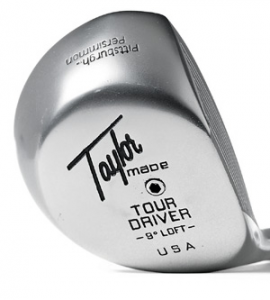
TaylorMade Golf Pittsburgh Persimmon
1979 was also the debut of metal woods. TaylorMade Golf had exploded onto the scene with their Pittsburg Persimmon clubs, which were made in McHenry, Illinois, just a short ride west of Highland Park.
At the time, the metal wood clubheads were filled with foam, which would often come loose and rattle. If you ever had to put heat to the neck of the club to re-shaft it, there was a good chance the foam would retreat or shrink inside the head and the club would rattle with a dull thud. The club itself was then ruined even though the repair made was perfect.
Every night we would have to load our cars with the members’ TaylorMade clubs and drive over to the TaylorMade factory in McHenry. Since we weren’t allowed inside, we would push the clubs through a window and wait for a brand-new club in exchange.
I recall thinking how it never mattered as the new plastic bagged club was doomed to fail as well, but the policy of the shop was to keep the membership happy at any cost. I never forgot the policy or the importance of quality.
After my first year of work at Exmoor, I asked my boss, the head pro, what I would be doing next year because being the starter sucked. He laughed and directed me to the member’s bags that needed to be re-gripped, whipped or re-shafted.
“This year I tested you” he said, “anyone who could be a starter at a private club and not alienate the members should make it through the rest of the PGA Program easily.” We laughed.
The PGA program back then included three stages: business school one, the playing ability test and then business school two. I was lucky enough to have Ralph Maltby of The Golfworks Company teach the clubmaking/fitting classes for both of my business schools.
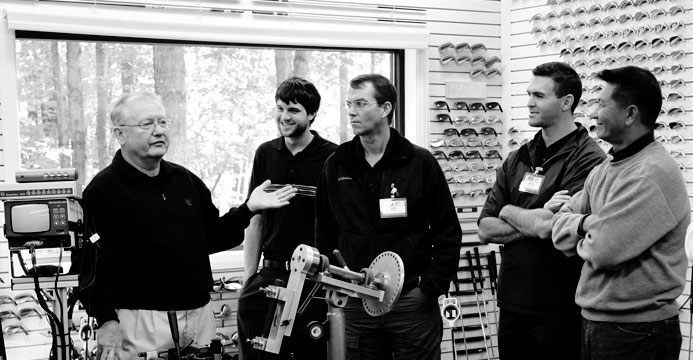
Ralph Maltby
I might have been the only guy in the room who was sitting on the edge of my seat paying attention to all the tools, machinery and stuff that helped those who made golf clubs.
After the classroom work, you had to pass your oral interview. Mine was at the beautiful Knollwood Club in Lake Forest.
The student would be expected to expect to talk for 45 minutes on a topic of their choice, then were peppered with questions by a group of peers. At that age, I felt like I could talk about everything I know in the world and that would be about 8 minutes.
But because of my interest in the topic, talking about clubmaking and club repair was a different story.
For my presentation, I made a sample of the clubs that I did for Mr. Austin’s grip issue, and I also made a driver up for what I told them would be senior female golfer.
On my panel of peers was my current boss, so I felt pretty good. Also on the panel was the legend, Mr. Hubby Habjan of Onwentsia Country Club in Lake Forest.
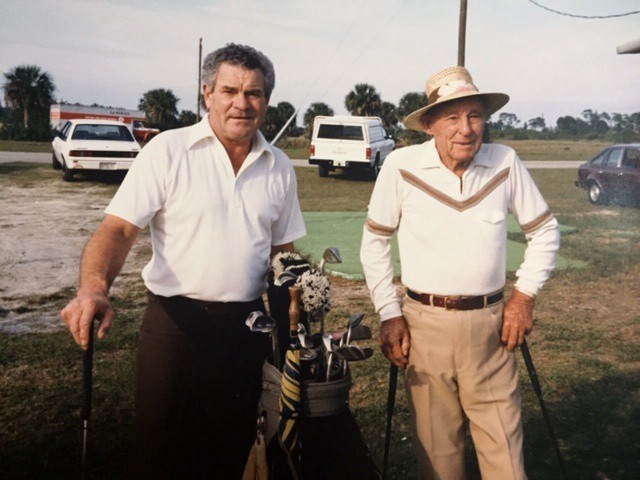
Hubby Habjan and George Smith
A member of the PGA of America Hall of Fame, the Professional Club Makers Hall of Fame and the Illinois Golf Hall of Fame, Hubby was the only local pro I had ever heard of at the time who actually had his own line of golf clubs.
While I had to back three EZ Go golf carts out so I could work on my little bench, Hubby had the greatest golf making and repair shop I had ever seen. I mean, what could I explain to Hubby Habjan about club repair and making?!
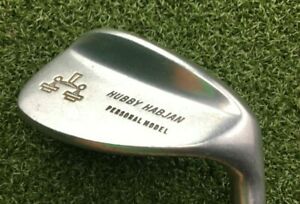
Hubby Habjan Sand Wedge
After completing the first part of the oral interview, it was time for my area of expertise presentation. First, I showcased Mr. Austin’s bubble grip, and everyone was impressed.
Then I presented the driver I created for the senior female golfer. I explained how I “fit” this mythical player and why I felt she needed a True Temper Dynalite with a lower kick point to help her lose some weight in her club and help her get the ball up in the air.
Looking straight across the table is Hubby, who drops his glasses down a bit and from ten feet away, says “TT Lite huh? That’s a Dynamic shaft. You know how I can tell? The step pattern in the shaft is a quarter inch off.”
He’s got me! I knew for a fact that Hubby was right because I ran out of TT Lite shafts but figured this was just show and tell anyway.
He is right and we both knew it! I start sweating, all this work and I am going to blow it all because of a half inch step pattern on the shaft. My boss chimes in and says, “Christ Hubby, give the kid a break”.
Hubby responds, “How old are you kid?” “Nineteen, I said, born in 1962.”
Hubby says, “I will let you off on the shaft but John (my boss), you know you need to be at least 18 years old to sign up to join the PGA in the first place?”
I wanted to say, you are the one who brought me the papers to sign up. You, of all people, knew how old I was!
Anyway, they sent me back for another season. Thankfully it was only one season because I went out to Palm Springs to work at LaQuinta Country Club.
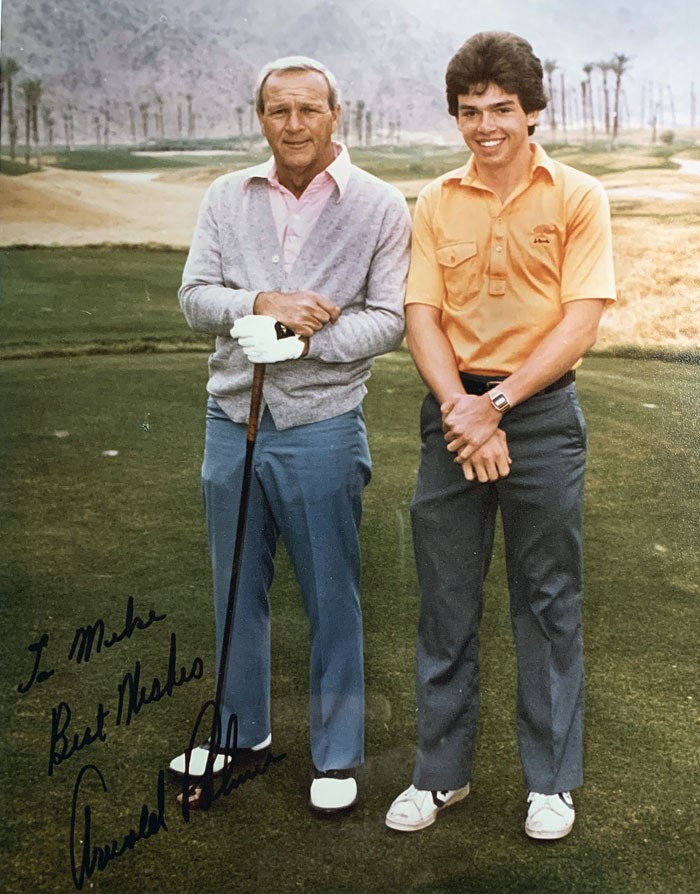
Arnold Palmer and Mike Tait at LaQuinta
Upon completion of the program, I got a job at Butterfield Country Club in Oak Brook. I didn’t realize it at the time, but it was the best job I ever had.
Just like at Exmoor, my job was to clean and fix every club in the member’s bags. Shafts, grips, whipping, loose or dented soleplates on the wooden woods, refinishing… anything that would make the member’s clubs look perfect for the next season. And cost was never an issue.
I learned how to hand dip woods for color and to hand dip the woods with their poly coating thanks to Mr. Maltby and PGA School.

Butterfield Country Club
There were 500 bags of clubs in the bag room with at least 14 clubs per bag, so you could imagine how hard the cash register rang every winter. Membership would often put in an “order” for their own clubs if they were headed to California, Florida or Arizona for the winter. These clubs took priority, and I would literally work 20 hours per day tinkering with clubs.
All the hours spent learning the art of clubmaking and repair was time well spent. And I loved it.
Next summer Callaway was the popular club, and the Callaway clubs came stock with the RCH60 shaft. It was a grey colored shaft and it sucked. This shaft broke all the time but if you called Callaway, they would send out a replacement next day air.
It got to the point that we were replacing members’ Callaway woods by the dozen per day. After witnessing the debacle of the lackluster shaft in the hottest club on the planet, I knew there had to be a solution, and an opportunity.
The following season, I moved on to my first public job as a PGA member, Springbrook Golf Course in Naperville. At the time, the hot club was Cobra and it also rattled.
After years of repeat issues with high-end clubs, the opportunity and my future became clearer. So, in 1998 I left to start my own golf business which was called Mirage Golf. We produced clone component heads and graphite shafts, which were popular at the time.
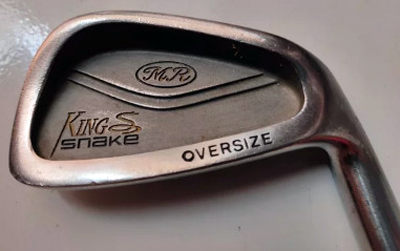
Mirage Golf Iron
I had a warehouse near home, set my own hours and finally had time to see my family. We had two phone lines and couldn’t keep up with the calls let alone get the orders out and the inventory replenished.
I also crafted custom orders all night long after my son went to bed. However, the clone craze quickly started to collapse, and I happily sold the business.
In 2001 I transitioned to making shafts for AccuFLEX out of North Carolina. My contact was in Taiwan and my manager there understood my desire for exacting specifications.
In October of 2001 the owner of AccuFLEX invited me to Mesquite Nevada to see the World Long Drive Championships. That experience changed everything!
Sitting in the stands day after day I watched every pro line clubhead crack, split, flatten and explode. After looking back on years and years of equipment issues, all the way back to replacing the original TaylorMade heads back in 1979, I thought, “why can’t anyone do this right?”
At dinner after competition, I asked some of the most successful players what they looked for in a clubhead. From their suggestions, I sketched out six designs on the backs of napkins. These designs would become the first clubs from my new company, SMT Golf.
Upon arrival back home I contacted my shaft guy in Taiwan to see who he knew and trusted in China for the best clubheads. He gave me a name of a guy and I told him my desire to make the world’s best clubheads, using the best materials and the best manufacturing techniques.
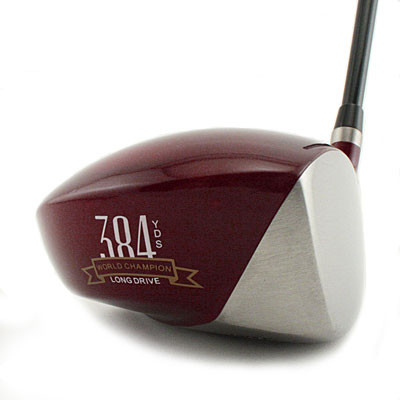
SMT 455 Deep Bore driver
From there it was on to China where I brought my napkin designs to the factory and was amazed at the difference in material “they” were using and what was available to use. Once the designs were complete, every single clubhead was canon tested at 150 mph before painting to ensure strength.
February 2002, all of the SMT heads were in my hands and selling pretty well. Because of the premium raw materials and exacting specifications, the new SMT club heads were among the among the most expensive.
I was selling driver heads at $139 each while the rest of the industry was selling at $39 to $89. My heads came with an SMT logo ferule and an SMT headcover as well.
The fall of 2002 was my first year on the Long Drive Circuit. After the competition was over, out of the three divisions, SMT heads won the Senior and the Open Division and just missed winning the women’s division by a ball that rolled on the out of bounds line but fell back in play!
The SMT brand was the star of the show and the success continued as we worked with six RE/MAX World Long Drive Championships and several of the longest hitters on professional tours including the Korn Ferry Tour, European Tour and PGA Tour. By using the very best materials, welding and design, we produced clubs that gave the professionals confidence that their clubheads would not crack, break or flatten during competition.
The SMT Golf brand was recently reintroduced with a whole new line of high performing golf clubs and components. With direct to consumer pricing on high quality golf club components, you can have custom clubs built for you or we can simply send you everything that you need to build the clubs on your own.
From working as an 18-year-old pre-apprentice clubmaker to the World Long Drive Championships, my path as a clubmaker had come full circle. I was not sure what the future would hold, but I was grateful for the journey and the opportunity to build the world’s best clubs for a living.









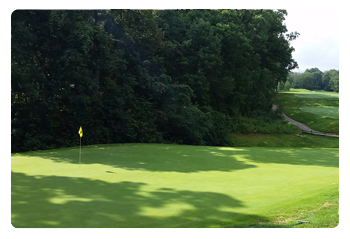 Find a Golf Course
Find a Golf Course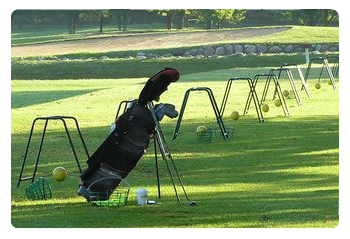 Find a Driving Range
Find a Driving Range Find a Topgolf
Find a Topgolf Find a Golf Instructor
Find a Golf Instructor